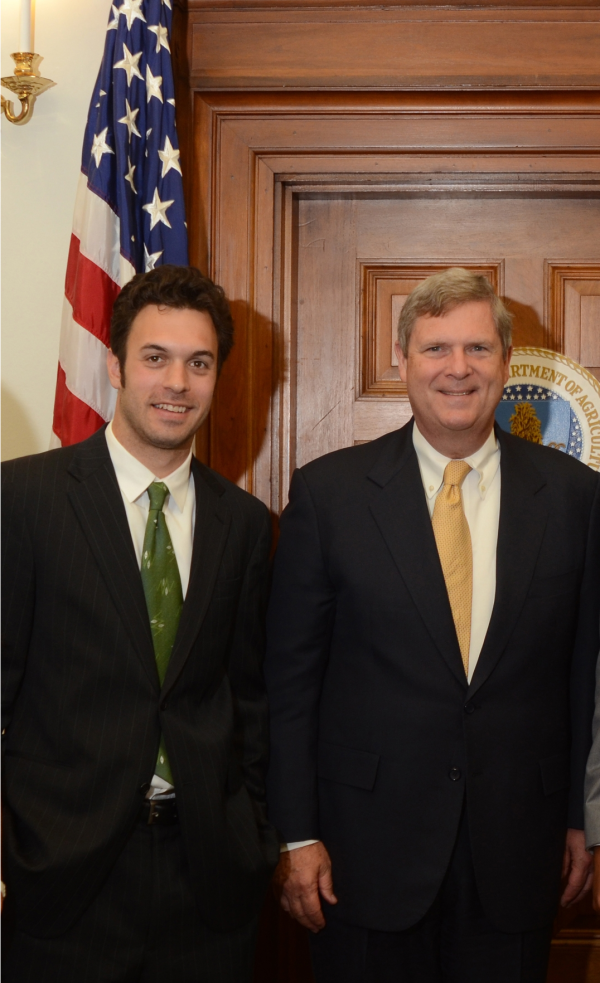Meet Board Member Noah Isaacs
with US Secretary of Agriculture, Tom Vilsack
This summer I went down to D.C. on a NYU Brademas Fellowship to work at the USDA. Interning at the USDA Office of Congressional Relations, I got an inside look at the Farm Bill as it moved through Senate and subsequently stalled in the House. It was fascinating to witness the political maneuvers that go into the amendment process. For example, when the Farm Bill was on the floor of the Senate, Senator Gillibrand offered an amendment that would increase SNAP funding while cutting crop insurance (this failed 33-66). Then, Senator Johnson of Wisconsin (one of my favorite phrases to hear on C-SPAN), introduced a motion to remove all of SNAP fromthe farm bill entirely, creating a separate nutrition bill (this failed 40-59). Such amendments, which were often diametrically opposite, gave a real sense of the tug of war that goes on between philosophical and political ideologies.
One of the things that makes the Farm Bill so costly and unwieldy is the fact that it includes both crop insurance and SNAP (along with many other titles). However, while this creates a deal with the devil for most politicians, it does so along regional lines. Once they passed the Farm Bill, Harry Reid and Mitch McConnell were practically high fiving on the Senate floor, because they actually managed to pass a bill in such a terrible political climate. I believe this was only possible because the contents of the bill creates regional confluences that do not fall strictly along partisan lines. As you may know, the terrible political climate in some ways ended winning out anyways. While a version of the Farm Bill made it out of the House Ag Committee, the House leadership refused to bring it to the floor. Even the worst drought in a long time couldn’t persuade them consider a bill, instead they went on summer recess, frustratingly pushing the buck forward.
Being in Washington was a lesson in how policy moves in inches not leaps and bounds. There is so much frustration with the process there. However, I also experienced moments of inspiration as well. I didn’t know what to expect when I was asked to take part in meeting with the Secretary of Agriculture, Tom Vilsack, but I was very impressed. Along with a handful of other USDA interns, I met with Vilsack for an hour in his office for an informal Q+A. The Secretary spoke of the importance of SNAP as a safety net and how strong the return on investment for the SNAP program is. When I asked him about the Bloomberg Big Gulp story and the role of government in influencing consumer behavior, he spoke candidly regarding the difficulties of regulating behavior in food consumption and the getting the buy-in necessary to do so.
Overall, the two months I spent in the capitol were enlightening, frustrating and an excellent experience to have under my belt as I pursue a career in health and food policy.



Noah,
Did you have an opportunity to go out and meet any of the DC residents and ask them how they have been affected by the Farm Bill and increases in food prices?